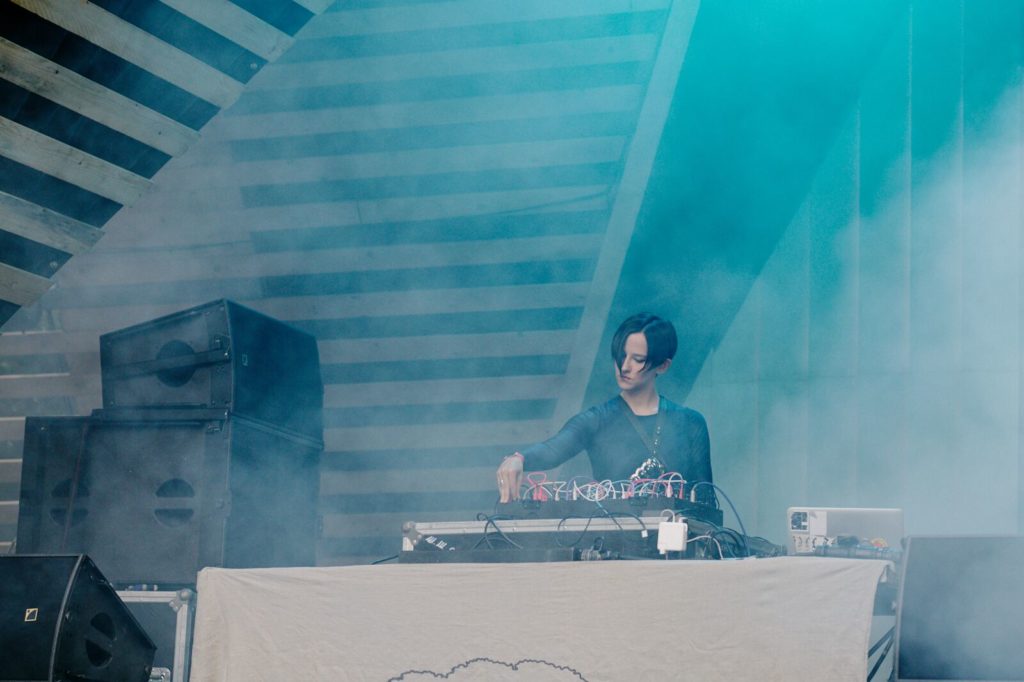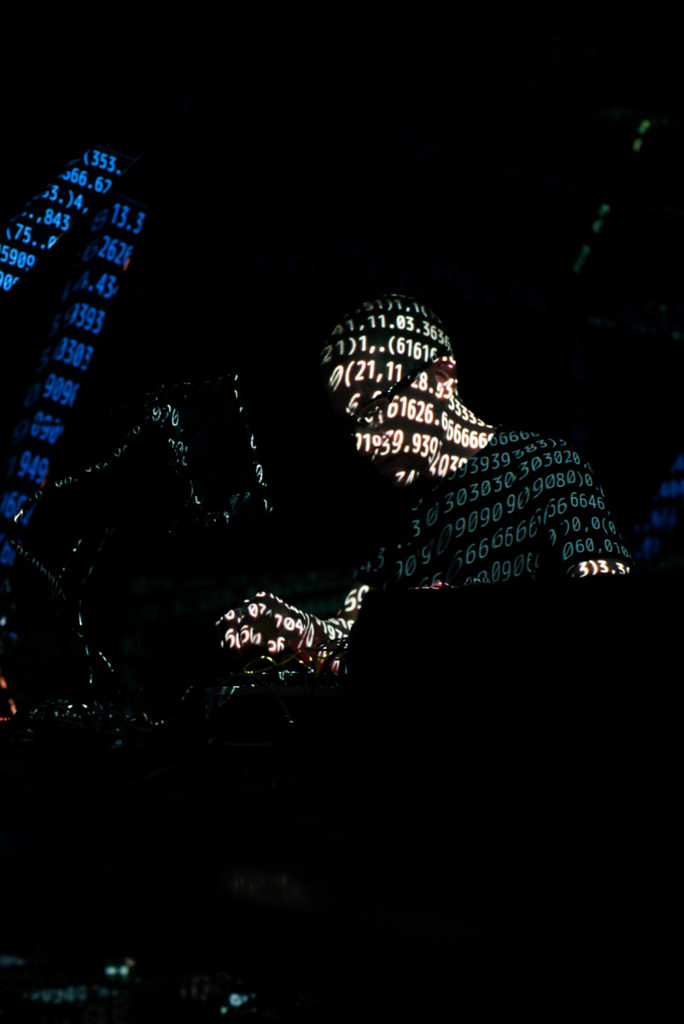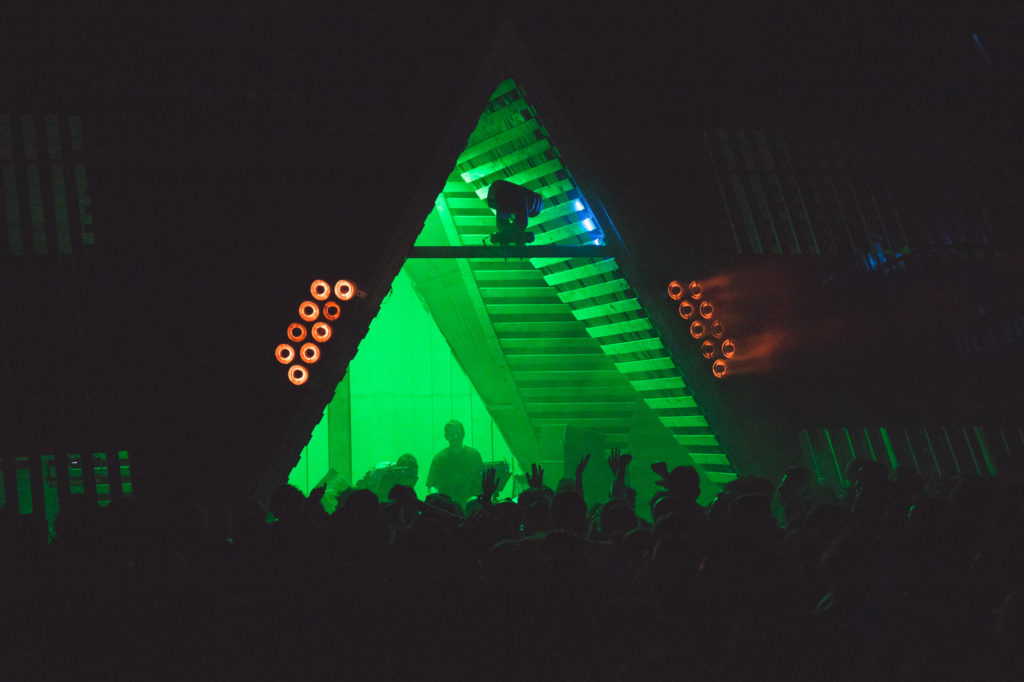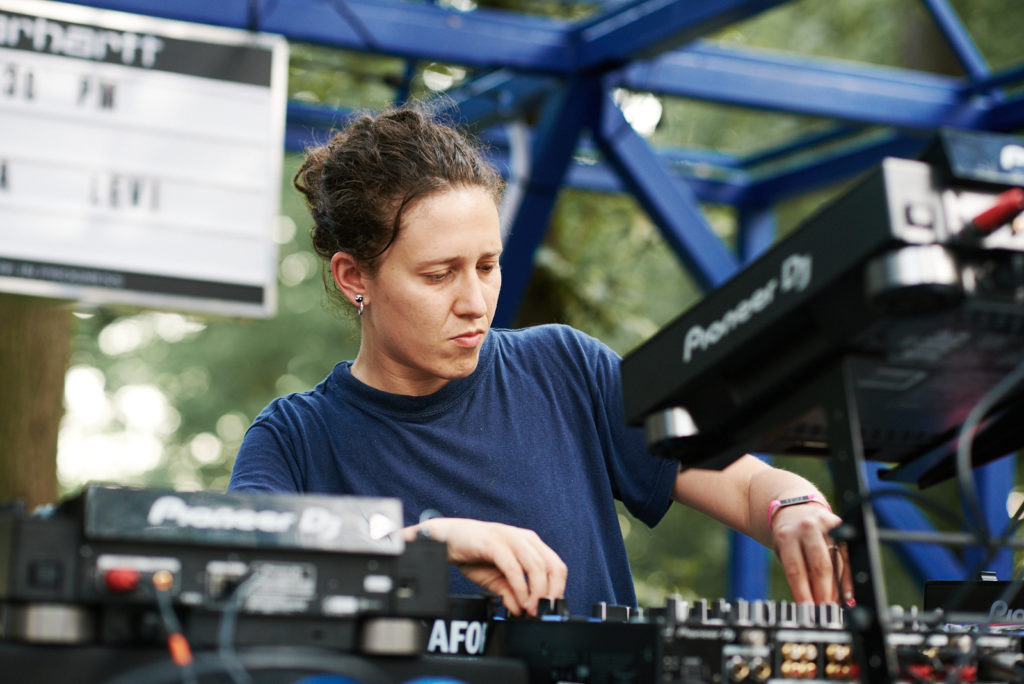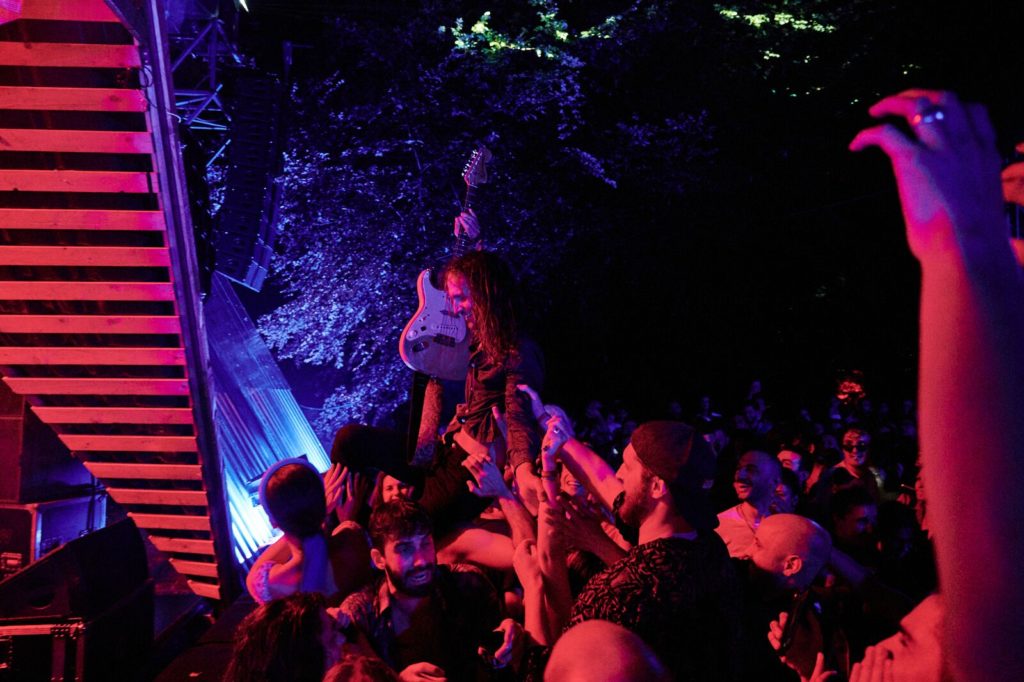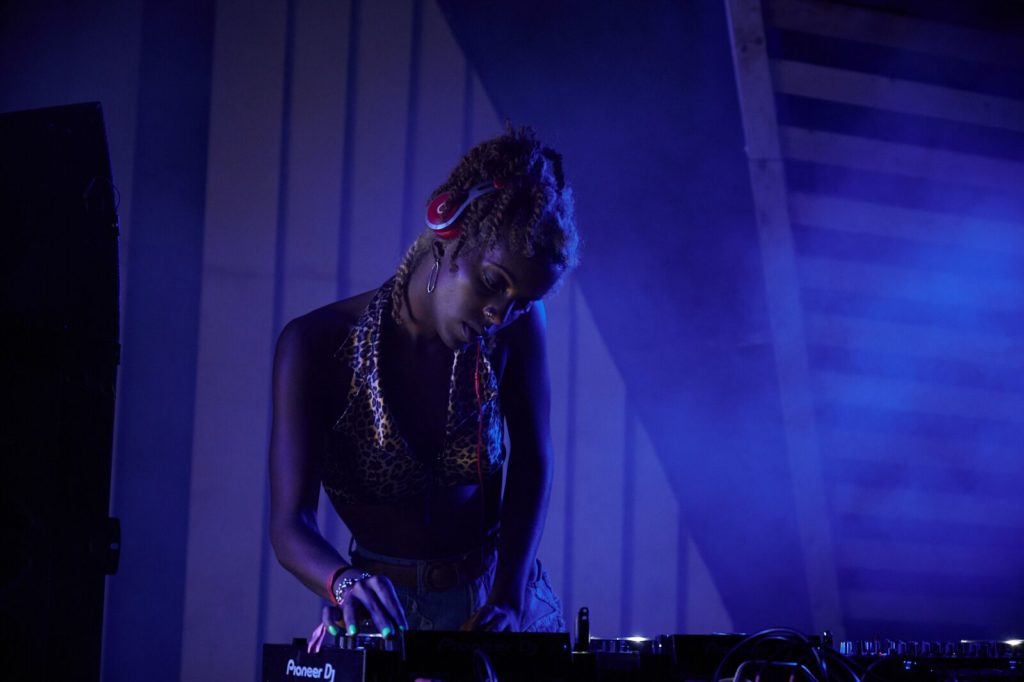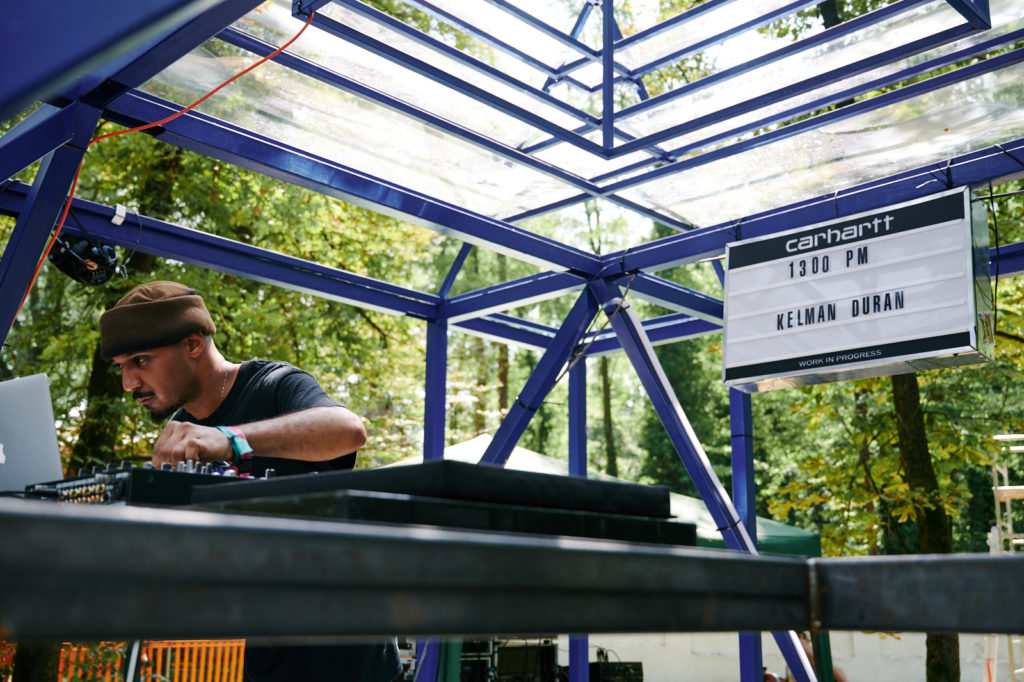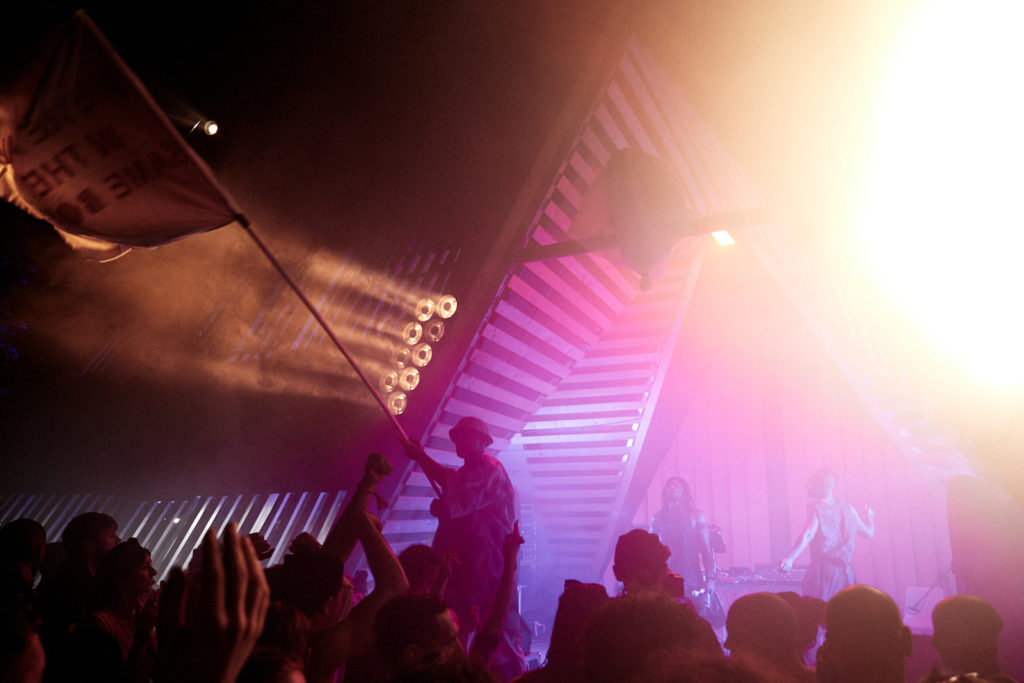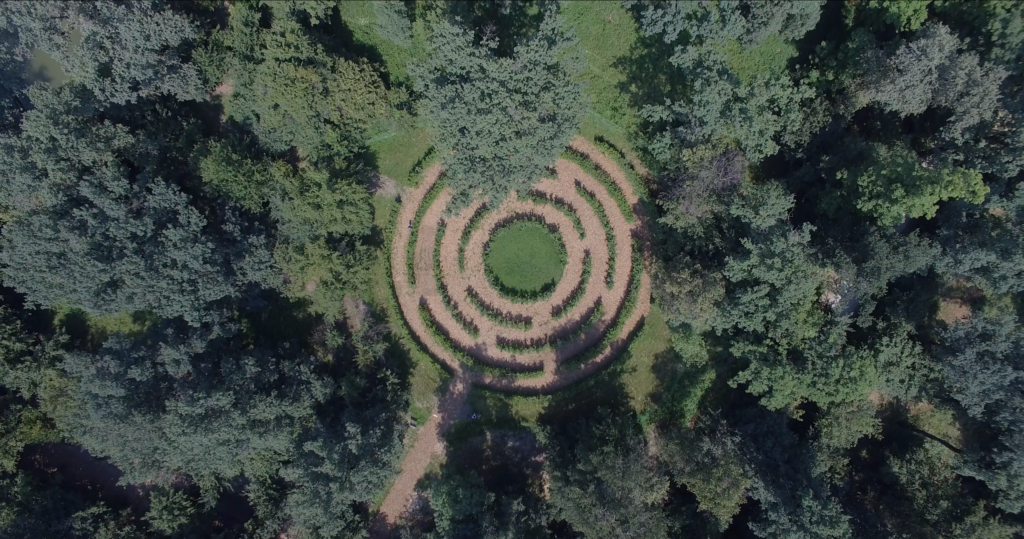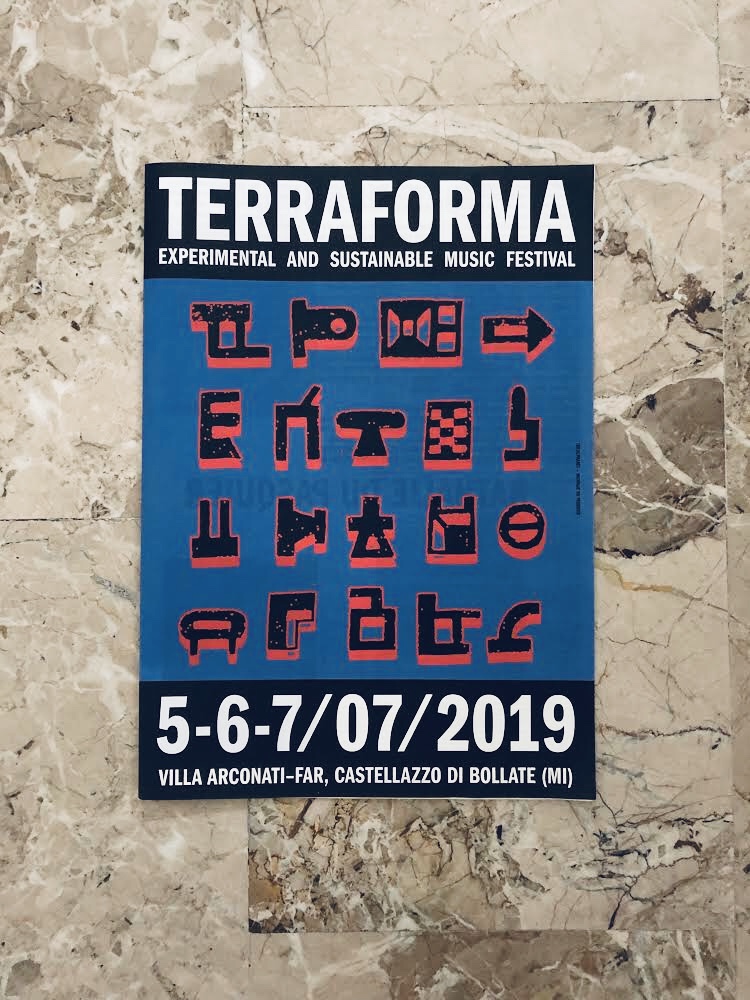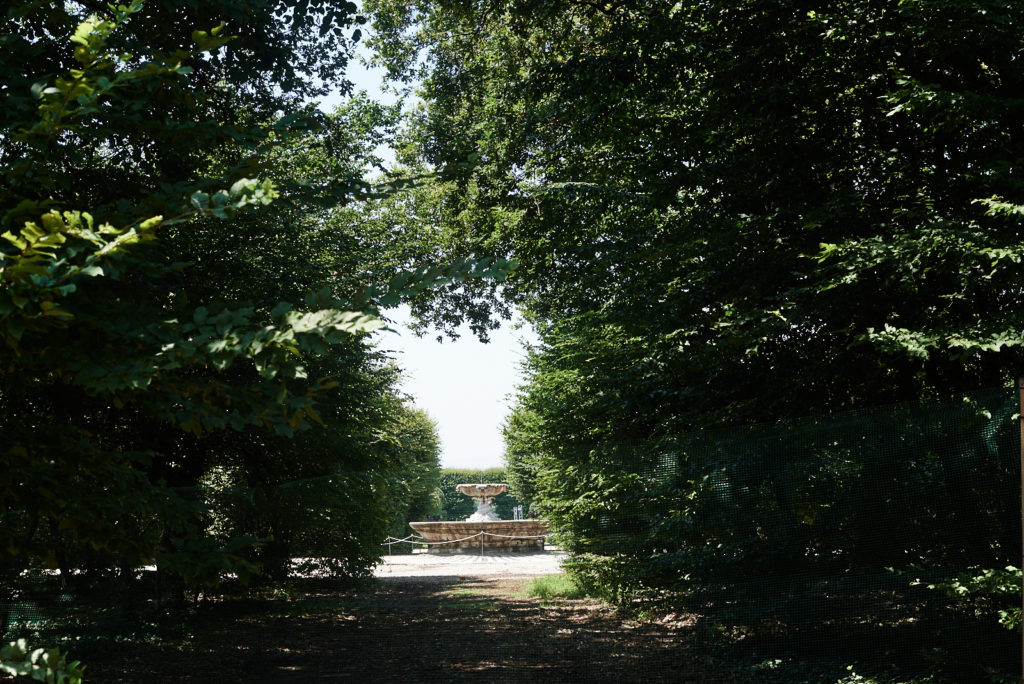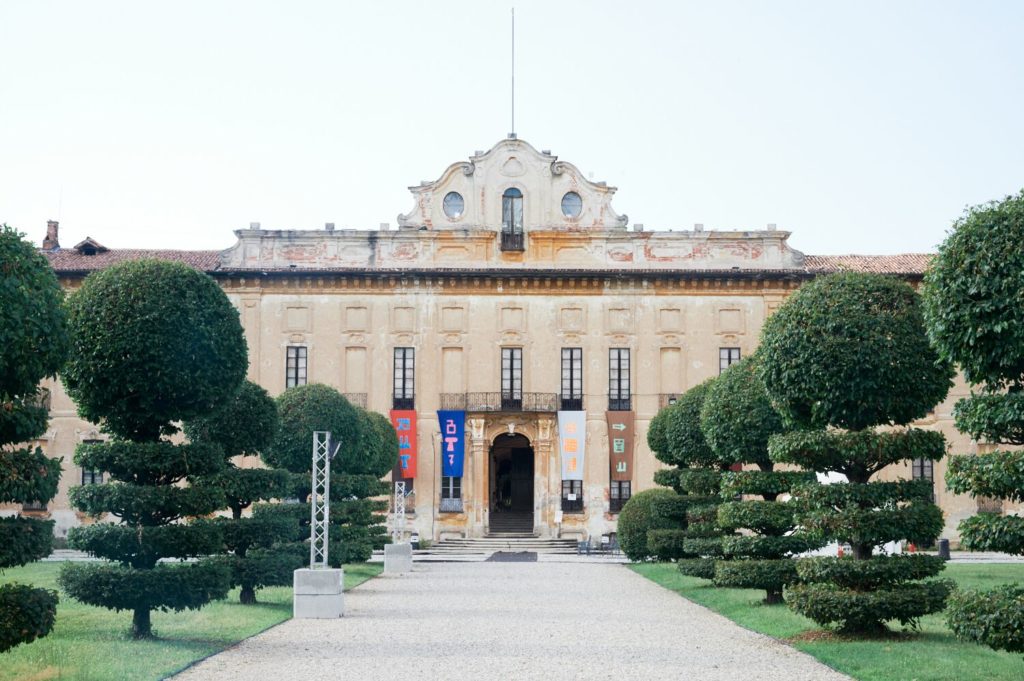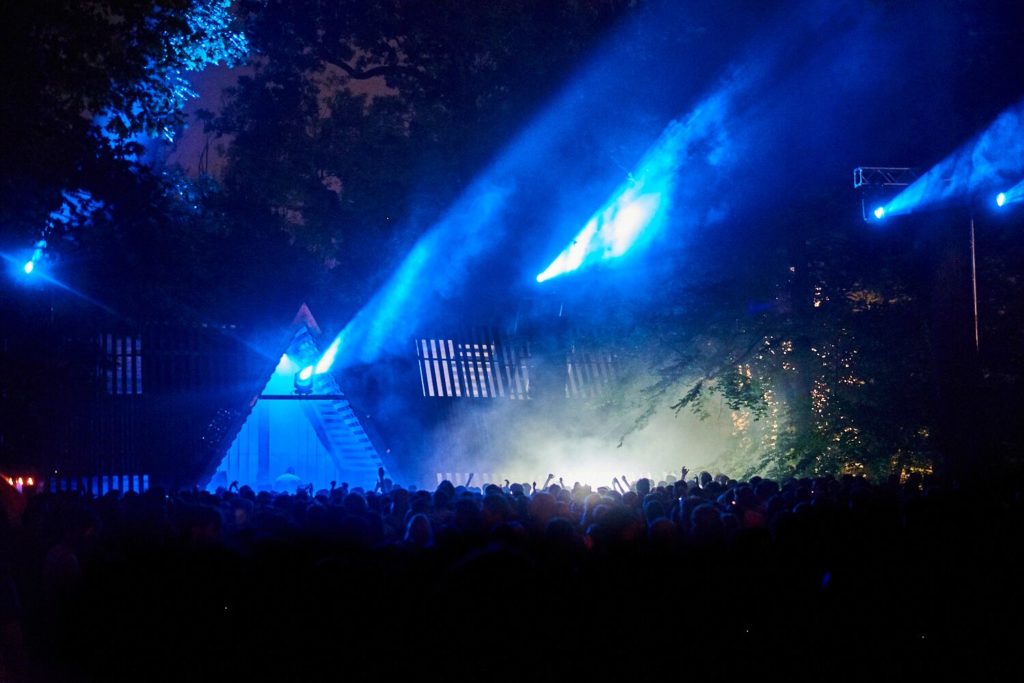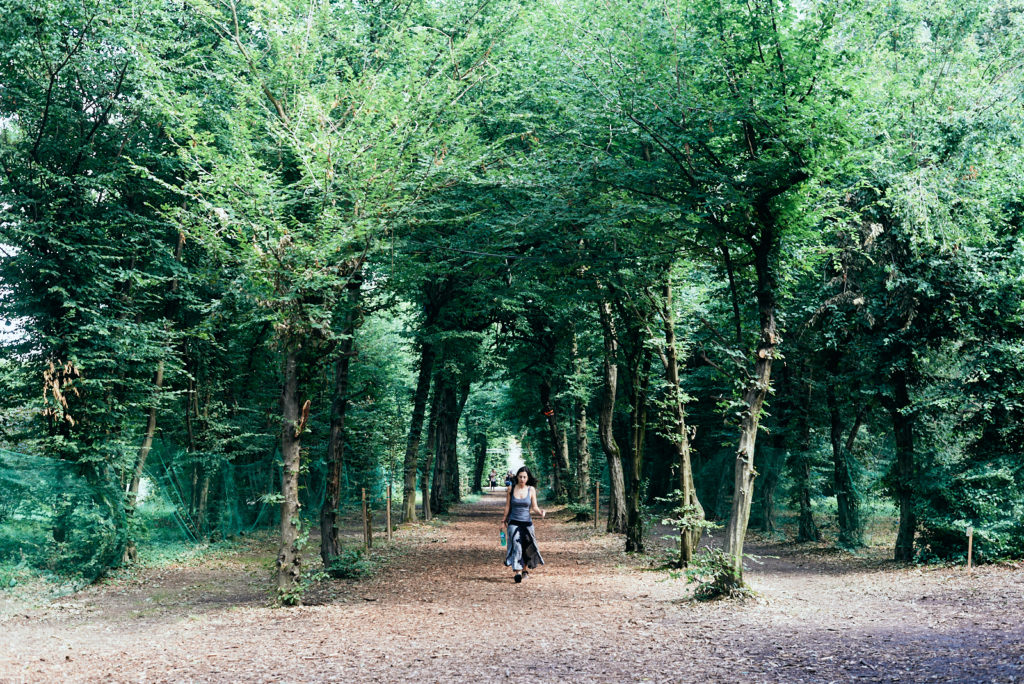Caterina Barbieri [see zweikommasieben #19] opened the festival with her modular synthesizer set-up. A fitting start to the festival as the Italian musician, whose recent album Ecstatic Computation out on Peter Rehberg’s Editions Mego [see zweikommasieben #17] has been received with great acclaim, represented only one of a number of local heroes in the line-up. Her music, which often is described as “baroque,” perfectly complements the generous grounds of the baroque Villa Arconati. Between July 5 and 7, the park around the villa on the outskirts of Milan was transformed into the site of the sixth edition of Terraforma Festival’s attempt to present “experimental and sustainable music.” The opening night’s programme offered a sweeping glimpse into current electronic music: Barbieri was followed by the American artist and musician Laurie Anderson, Japan-based algo-rave godfather Renick Bell [see zweikommasieben #17], and the German sound-design guru and Ableton-founder Monolake before Efdemin [see zweikommasieben #19] and Marco Shuttle took the main stage with Berghain techno. DJ Stingray [see zweikommasieben #16] closed the night with his signature Detroit electro.
A heavy storm interrupted Saturday’s proceedings in the early evening, temporarily shutting down the festival, which was resumed almost without any omissions once the weather had cleared. Before the storm, Vladimir Ivkovic [see zweikommasieben #18], resident at the Salon des Amateurs, played slow Big Beat, Drum’n’Bass, and Trip Hop, followed by a somewhat shaky but all the more sympathetic set by Mica Levi, whose enthusiasm showed through her entire performance and would not be tempered by the gathering of ominous clouds that brought the festival to a halt near the end of her slot. After heavy rains, Lorenzo Senni [see zweikommasieben #18] welcomed back the crowd on the main stage with a collection of adapted versions of tracks released as Stargate on Milan label Hundebiss seven years ago and others pieces. This newly formed version of Stargate also featured guitarist Eddy Current on stage who added his own touch to the songs, as when the beautiful study “Driving Hyperreality” from the 2013 EP Hexplore Superfluidity became the background to a lavish guitar solo—it is worth noting that Senni is the second Warp act after Yves Tumor to perform as a rock band in 2019. Juliana Huxtable was up next and astounded with two-hour-long sync-wizardry featuring around 160 tracks [sic!] rarely played at a lower BPM count. The Russian producer Buttechno’s live-set tested the audience’s patience with an ambient intro that seemed long after Huxtable’s dance-centric set. The evening was closed by the Parisian Whities signee Bambounou.
Sunday saw two more Hundebiss acts in Kelman Duran [see zweikommasieben #20] and Italian label boss Simone Trabucchi. Duran, crowned by Boomkat as “Reggaeton’s answer to Burial,” played in the early afternoon, while Trabucchi’s project Still [see zweikommasieben #20], dedicated to the often-overlooked connections between Italy, Ethiopia, and Jamaica, marked the final live performance of the festival. Between these performances, Canadian producer Ramzi, who emerged from the Total Stasis ranks, guitarist Richard Bishop, italo-dub-techno legend Donato Dozzy, and RP Boo, godfather of footwork, entertained the crowd with a broad spectrum of music.
There is no question about the strength of the line-up which, as the frequent references in square brackets indicate, thoroughly meshes with the interests of zweikommasieben. It is less clear, however, to what degree the sound of the festival can be considered experimental. After all, barely any artist in this scene would not describe their work as an attempt to explore music in new and unconventional ways. Furthermore, if one compares the programming of the festival to other events who claim the label “experimental” for themselves, one is left with an altogether conventional formula: slow, strange or even no beats before dusk; dance-friendly rhythms with kicks twice or three times per second after dark. Even commendable side-events, such as readings, exhibitions, and the like, are in line with said formula (a highlight definitely was “C-Cascate Alphabetiche,” a series of side-performences co-curated with Francesco Cavaliere, featuring Leila Hassan, James Ferraro, and others). The relaxed atmosphere backstage further compounds this fact. Aside from expressing the hospitality of the organizers and volunteers, which also showed at various other points throughout the festival and should not go unmentioned, the familiarity of the artists backstage can be considered an indicator of the consensus within the scene [of which this magazine is part of as well] of what might be considered interesting, of who gets to play such festivals, of who, in the end, is experimental music, to use Lolina’s words.
What about sustainability? A festival guide printed in newspaper format alongside little wooden notice boards distributed across the grounds admonishes visitors to follow a number of rules in order to ensure the sustainability of the event. These include the re-use of cups for water and other beverages, the separation of garbage, the minimization of water waste, and similar measures. Not only are these demands laudable, but they also translated into action with visitors putting in an effort to act accordingly. The Sustainability Report available on the festival’s website classes these measures under the heading “Low Impact,” which also includes, for example, the provision of electric cars for people involved in organizing the festival as well as the free shuttle service to the local stations in order to encourage visitors to travel by public transport. The report also documents the attempt to keep the festival’s ecological footprint to a minimum in regard to the construction of the stage, the re-building of certain sections of the grounds of the Villa Arconati, as well as practices conducive to supporting a diverse and inclusive environment. The thoughts regarding “Low Impact,” however, do not seem to influence the selection of artists. More than a third of invited acts (10 of 24 in the main program) live outside of Europe and can be assumed to leave behind a sizeable carbon footprint. This point is not addressed anywhere, neither on the website nor in the above-mentioned guide nor the report. It would be reasonable for a festival claiming sustainability as one of its core values while inviting artists whose attendance requires multiple international flights to openly discuss or at least address this internal contradiction within the discursive framework of the event.
Of course sustainability is not a simple matter, and it would be unfair to class festivals as either sustainable or not. And the discussion has to begin somewhere. Terraforma Festival certainly contributes to it. Furthermore, if one extends the definition of sustainability from the protection of the natural environment to the practice of preservation in general, then Terraforma doubtlessly is even more sustainable: it creates an ecosphere in which experimental music can flourish. The festival offers all the necessary means for the presentation and appreciation of niche music—a good amount of idealism and enthusiasm, an extraordinary location, an interested audience, and solid infrastructure—and in doing so contributes to its continuing existence.
—
Translation from German to English by N. Cyril Fischer
